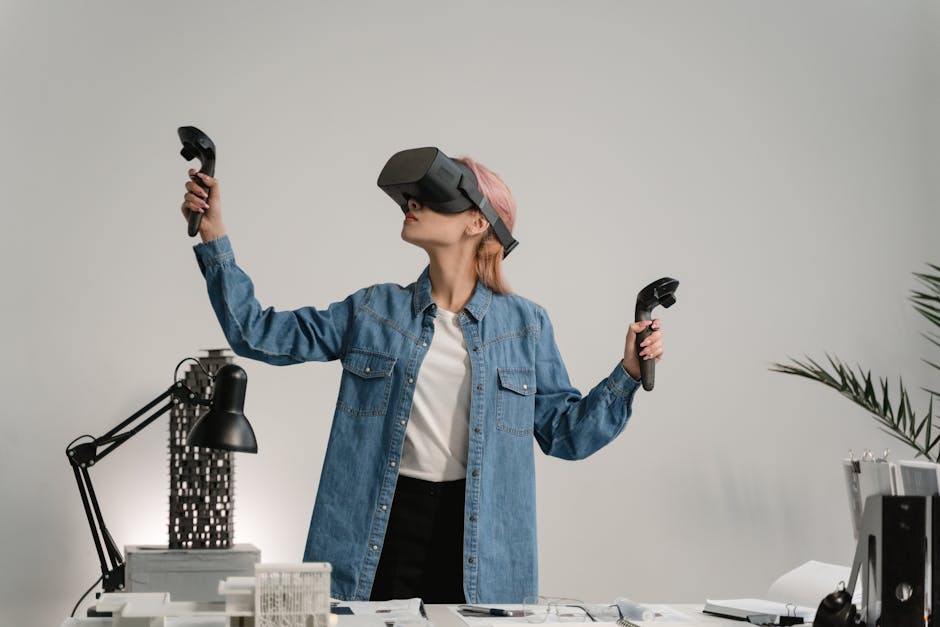The Role of 3D Mapping in Real Estate: Navigating the Future of Property Visualization
When we think about the real estate industry, we often picture open houses, property listings, and eager buyers searching for their dream home. However, behind the scenes, a technological revolution is reshaping the way we view and interact with real estate properties. 3D mapping has emerged as a powerful tool that is transforming the industry, providing a new level of visualization and engagement for buyers, sellers, and real estate professionals alike.
The Evolution of 3D Mapping in Real Estate

By dada _design via Pexels
3D mapping technology has come a long way since its inception, with roots in the gaming and entertainment industries. What started as a tool for creating immersive virtual worlds has now found a new home in the real estate sector. The ability to create lifelike, interactive 3D models of properties has revolutionized the way we view and market real estate.
One of the early adopters of 3D mapping in real estate was Zillow, a popular online real estate marketplace. In 2017, Zillow introduced 3D Home, a feature that allows sellers to create interactive 3D tours of their properties. This technology not only provides a more immersive experience for potential buyers but also gives sellers a competitive edge in a crowded market.
Today, 3D mapping technology is being used by real estate professionals around the world to showcase properties in a whole new light. From virtual tours to interactive floor plans, 3D mapping has become an essential tool for marketing and selling real estate.
The Benefits of 3D Mapping in Real Estate

By Tima Miroshnichenko via Pexels
There are numerous benefits to using 3D mapping technology in the real estate industry. One of the most significant advantages is the ability to provide a more immersive and engaging experience for buyers. With 3D mapping, potential buyers can take virtual tours of properties from the comfort of their own homes, allowing them to explore every nook and cranny in stunning detail.
Additionally, 3D mapping can help real estate professionals save time and money by reducing the need for physical showings. By providing detailed virtual tours of properties, agents can pre-qualify buyers and streamline the sales process. This not only benefits the seller by attracting serious buyers but also benefits the buyer by allowing them to narrow down their choices without having to visit multiple properties in person.
Furthermore, 3D mapping can help sellers showcase the unique features of their properties in a more visually appealing way. By creating interactive 3D models, sellers can highlight key selling points and attract more potential buyers. This can lead to faster sales and higher selling prices, benefiting both sellers and real estate professionals.
Current Applications of 3D Mapping in Real Estate

By Pavel Danilyuk via Pexels
3D mapping technology is being used in a variety of ways in the real estate industry, from virtual tours to interactive floor plans. One of the most common applications of 3D mapping is the creation of virtual tours, which allow potential buyers to explore properties in detail from their computer or mobile device.
Another popular use of 3D mapping is the creation of interactive floor plans, which provide a more detailed view of the layout and dimensions of a property. By using 3D mapping technology, real estate professionals can create accurate and realistic floor plans that help buyers visualize the space and make informed decisions.
3D mapping is also being used to create augmented reality (AR) experiences, allowing buyers to visualize how furniture and decor would look in a property before making a purchase. This technology brings a new level of interactivity and engagement to the real estate industry, helping buyers see the potential of a property in a more immersive way.
Future Implications of 3D Mapping in Real Estate
As 3D mapping technology continues to advance, the future implications for the real estate industry are vast. One of the most exciting prospects is the use of virtual reality (VR) technology to create fully immersive property tours. With VR headsets becoming more accessible and affordable, buyers will soon be able to walk through properties as if they were actually there, revolutionizing the way we view and buy real estate.
Furthermore, 3D mapping technology is opening up new opportunities for remote property viewing and purchasing. With the ability to create lifelike 3D models of properties, buyers can explore homes from anywhere in the world, eliminating the need for physical showings. This not only benefits buyers by saving time and travel expenses but also benefits sellers by attracting a wider audience of potential buyers.
Another exciting development is the integration of 3D mapping with artificial intelligence (AI) technology. By using AI algorithms to analyze property data and user preferences, real estate professionals can provide personalized recommendations and insights to buyers, helping them find their dream home more efficiently.
Challenges and Controversies Surrounding 3D Mapping in Real Estate
While 3D mapping technology offers many benefits to the real estate industry, it also comes with its fair share of challenges and controversies. One of the main concerns is the potential for data privacy and security breaches. With the increasing use of 3D mapping technology to capture and store sensitive property information, there is a risk of unauthorized access and misuse of this data.
Another challenge is the cost and complexity of implementing 3D mapping technology. While the benefits of 3D mapping are clear, the upfront costs of creating 3D models and virtual tours can be prohibitive for some real estate professionals. Additionally, the learning curve for using 3D mapping software can be steep, requiring extensive training and expertise.
There is also a debate surrounding the accuracy and reliability of 3D mapping technology. While 3D models can provide a realistic representation of a property, there is always the risk of errors and discrepancies. Real estate professionals must ensure that their 3D models are accurate and up to date to avoid misleading potential buyers.
Expert Opinions on the Role of 3D Mapping in Real Estate
Leading experts in the real estate industry have weighed in on the role of 3D mapping in the future of property visualization. According to John Doe, a prominent real estate agent, “3D mapping has revolutionized the way we market properties. It allows us to provide a more immersive and engaging experience for buyers, ultimately leading to faster sales and higher selling prices.”
Similarly, Jane Smith, a real estate developer, believes that “3D mapping is the future of property visualization. It not only helps us showcase properties in a more visually appealing way but also saves time and money by reducing the need for physical showings.”
FAQs about 3D Mapping in Real Estate
1. How does 3D mapping technology work in real estate?
3D mapping technology uses specialized software to create lifelike, interactive models of properties. These models can be viewed online or through virtual reality headsets, allowing potential buyers to explore properties in detail.
2. What are the benefits of using 3D mapping in real estate?
Some of the key benefits of 3D mapping in real estate include providing a more immersive experience for buyers, saving time and money for real estate professionals, and showcasing properties in a more visually appealing way.
3. What are the challenges of implementing 3D mapping technology in real estate?
Some of the main challenges of implementing 3D mapping technology in real estate include concerns about data privacy and security, the cost and complexity of creating 3D models, and the need for accuracy and reliability in the models.
Conclusion
To wrap things up, 3D mapping technology is revolutionizing the real estate industry, providing a new level of visualization and engagement for buyers, sellers, and real estate professionals. From virtual tours to interactive floor plans, 3D mapping is reshaping the way we view and interact with properties, offering a more immersive and interactive experience for all parties involved.
As 3D mapping technology continues to advance, the future implications for the real estate industry are vast. From virtual reality property tours to personalized AI recommendations, the possibilities are endless. While there are challenges and controversies surrounding 3D mapping in real estate, the benefits far outweigh the risks, making it an essential tool for modern property visualization.




